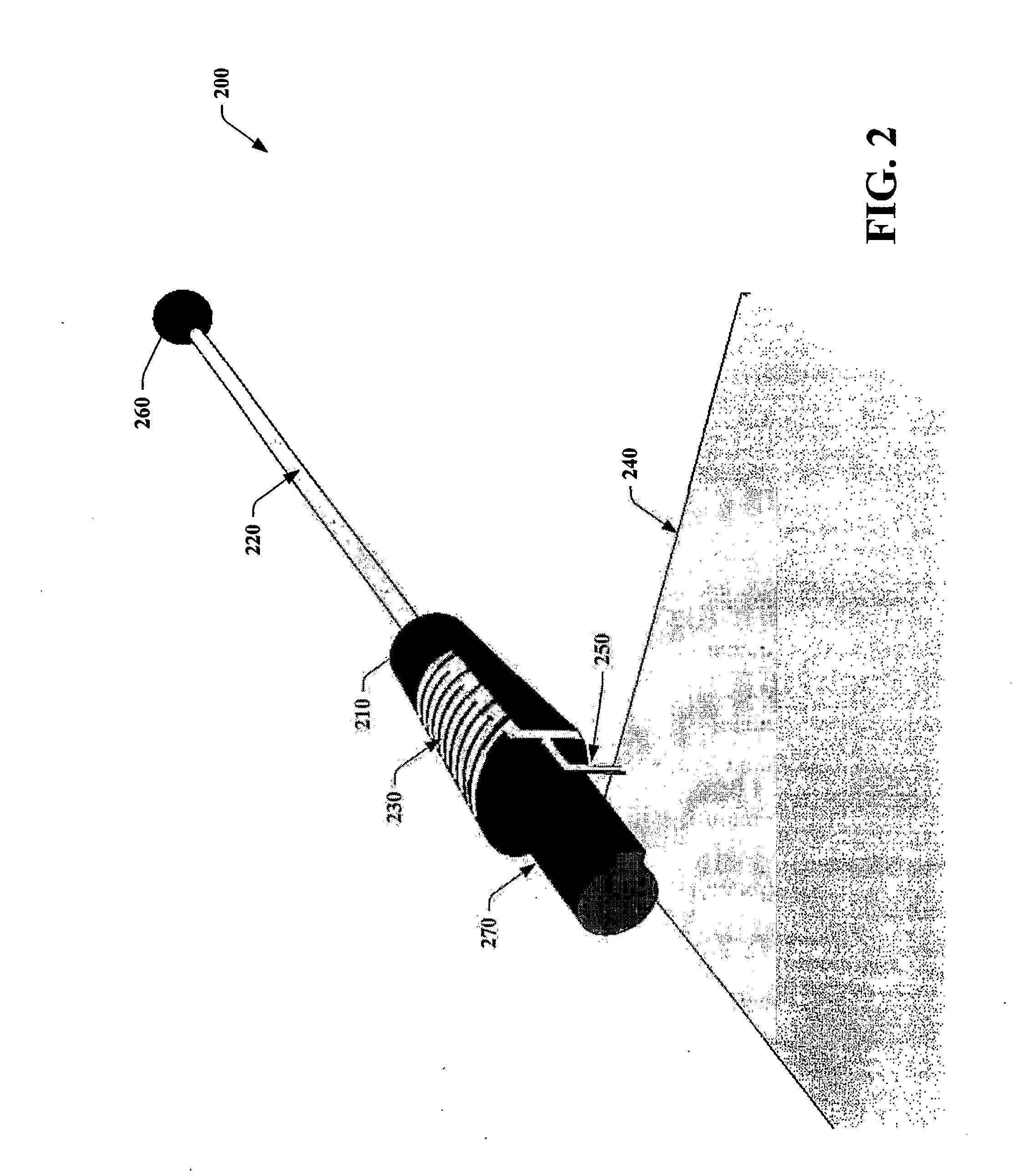Systems and methods that utilize an active stub/parasitic whip antenna to facilitate mobile communication
a technology of parasitic whip and active stub, which is applied in the field of mobile communication, can solve the problems of pushing the existing analog technology to a capacity limit or ceiling, affecting the reliability of mobile devices, and requiring more expensive and complex components, so as to achieve the effect of preventing the overlap of the two antenna components
- Summary
- Abstract
- Description
- Claims
- Application Information
AI Technical Summary
Benefits of technology
Problems solved by technology
Method used
Image
Examples
Embodiment Construction
[0029] The present invention relates to systems and methods that transmit and / or receive radio frequency (RF) signals via mobile communication devices (e.g. a cellular phone). In particular, the systems and methods provide a relatively compact antenna structure for mobile devices with limited physical volume (e.g., footprint), wherein the antenna structure can include an active stub and a parasitic whip. The antenna structure of the present invention does not require a mechanical interface between the active stub and parasitic whip to provide a conductive connection to the whip when it is in an extended position. Since the mechanical interface is not employed, the present invention provides a simple antenna design, which reduces antenna wear, is more reliable, easier to manufacture, and reduces cost.
[0030] The present invention is now described with reference to the drawings, wherein like reference numerals are used to refer to like elements throughout. In the following description...
PUM
 Login to View More
Login to View More Abstract
Description
Claims
Application Information
 Login to View More
Login to View More - R&D
- Intellectual Property
- Life Sciences
- Materials
- Tech Scout
- Unparalleled Data Quality
- Higher Quality Content
- 60% Fewer Hallucinations
Browse by: Latest US Patents, China's latest patents, Technical Efficacy Thesaurus, Application Domain, Technology Topic, Popular Technical Reports.
© 2025 PatSnap. All rights reserved.Legal|Privacy policy|Modern Slavery Act Transparency Statement|Sitemap|About US| Contact US: help@patsnap.com



